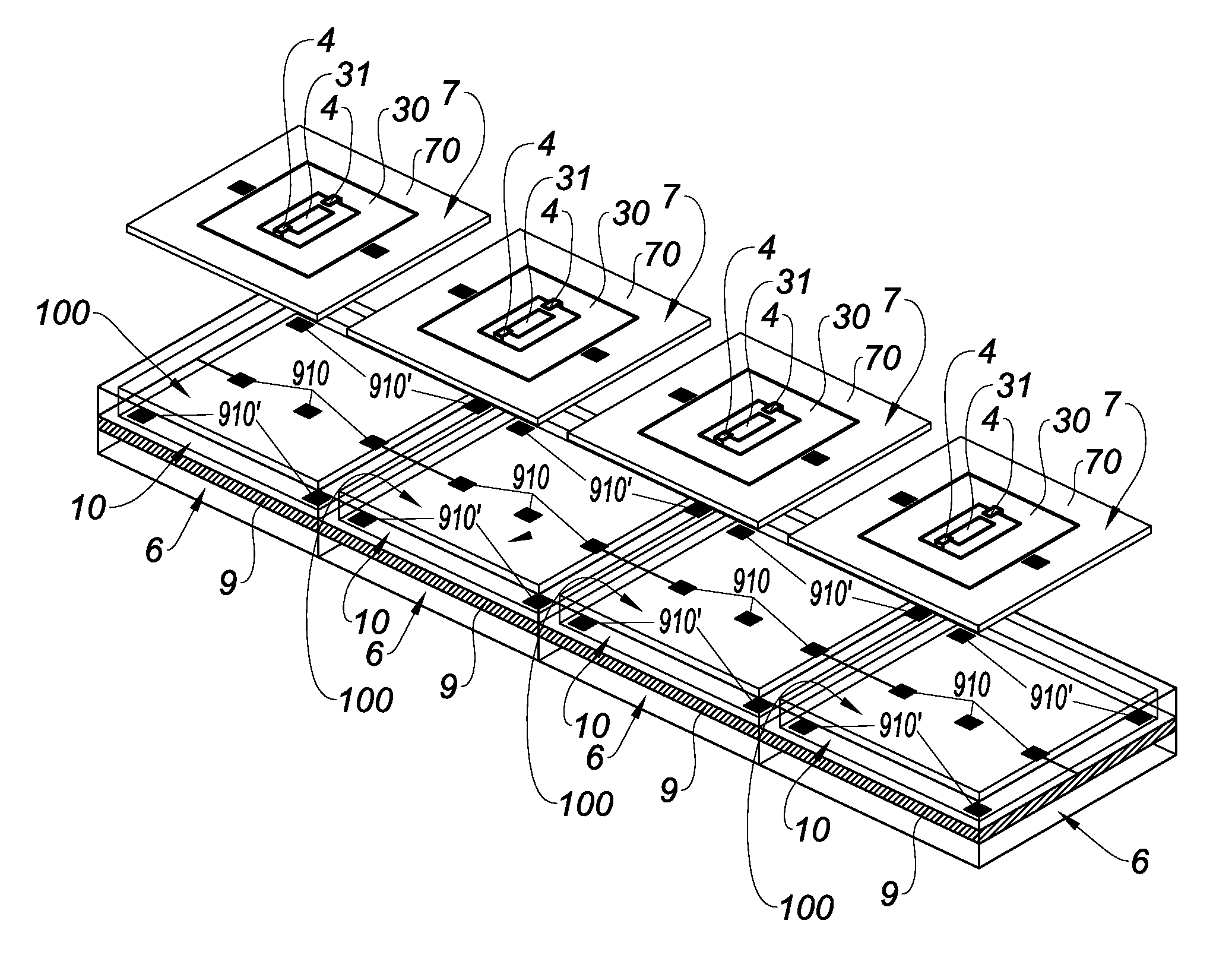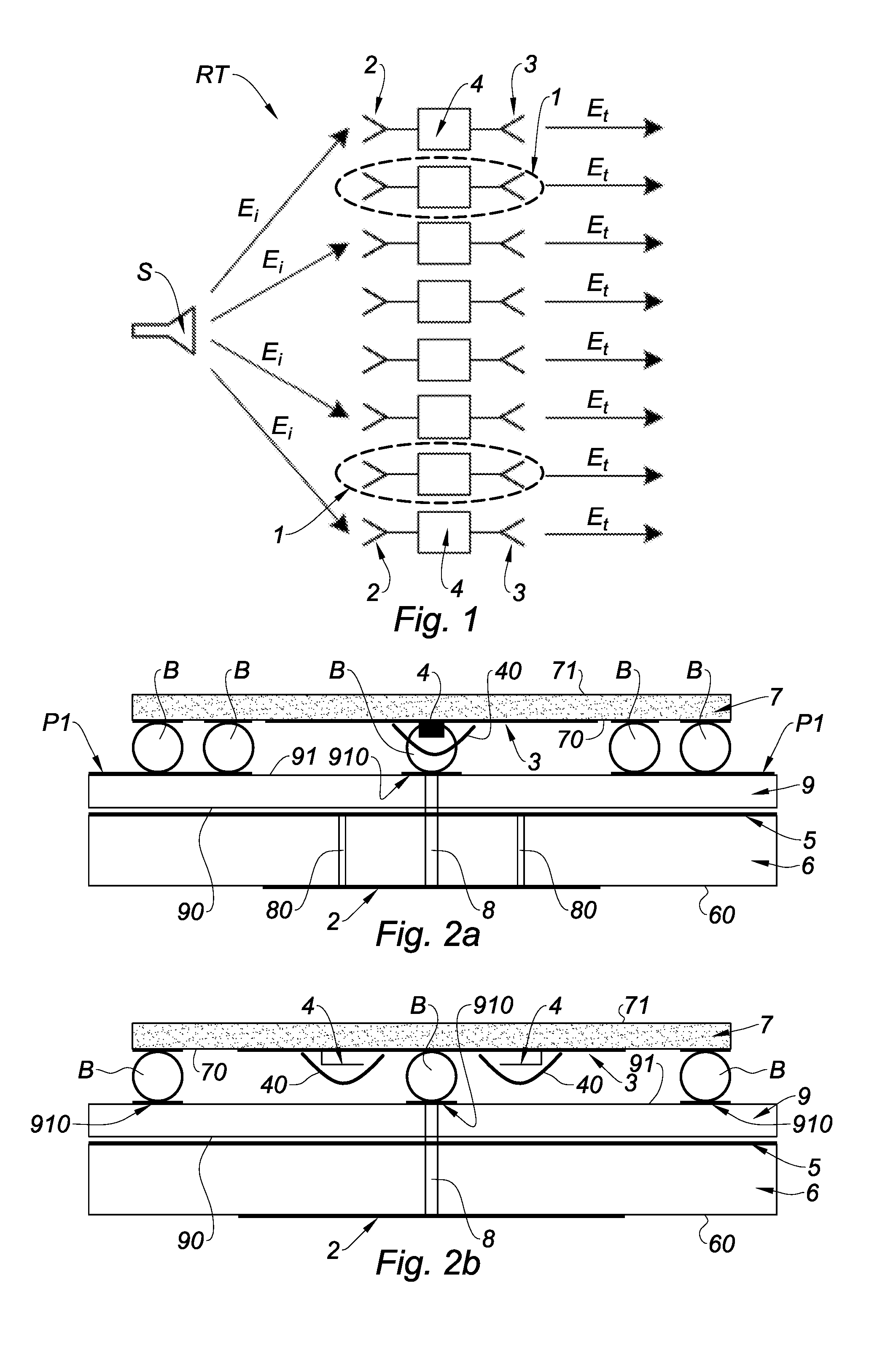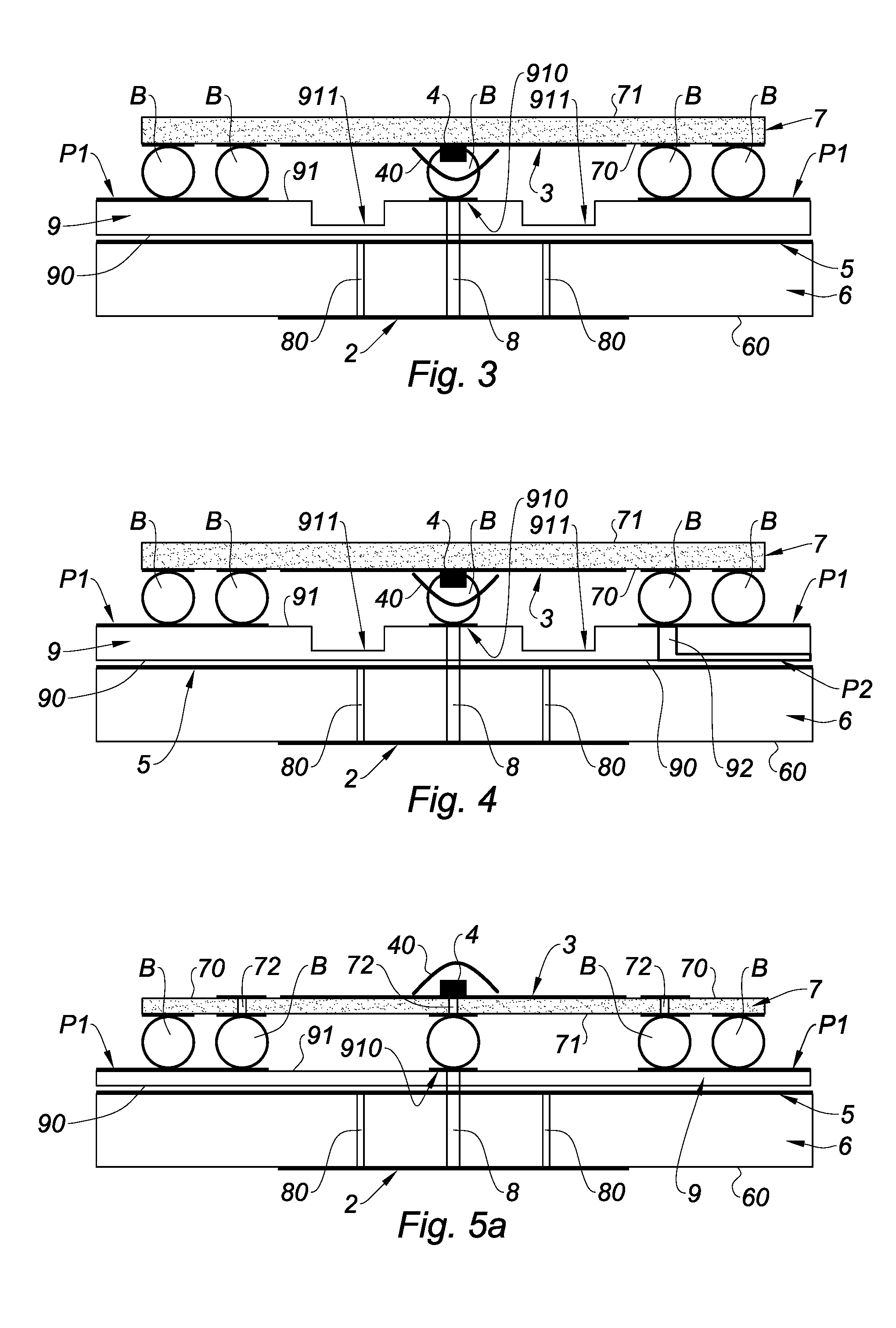Transmitarray unit cell for a reconfigurable antenna
a technology of transmit antenna and unit cell, which is applied in the structure of radiating elements, particular array feeding systems, antennas, etc., can solve the problems of affecting the radiation diagram of the transmit antenna, affecting the performance of the unit cell, and forming of switches thus becoming a problem, so as to achieve the effect of reducing dielectric losses
- Summary
- Abstract
- Description
- Claims
- Application Information
AI Technical Summary
Benefits of technology
Problems solved by technology
Method used
Image
Examples
Embodiment Construction
[0085]For the different embodiments, the same references will be used for identical elements or elements performing the same function, to simplify the description. The technical characteristics described hereafter for different embodiments are to be considered separately or according to any technically possible combination.
[0086]FIGS. 1 to 7 illustrate a unit cell 1 of a transmitarray RT for an antenna reconfigurable at an operating frequency, preferably in the range from 30 GHz to 110 GHz.
[0087]Unit cell 1 comprises:
[0088]a receive patch antenna 2, intended to receive an incident wave Ei;
[0089]a transmit patch antenna 3 intended to transmit the incident wave Ei with a phase shift (the phase-shifted transmitted wave Et being illustrated in FIG. 1), and comprising first and second radiation surfaces 30, 31 separated from each other by a separation area ZS (clearly apparent in FIG. 6) to be electrically isolated, transmit antenna 3 and receive antenna 2 being electrically connected to...
PUM
 Login to View More
Login to View More Abstract
Description
Claims
Application Information
 Login to View More
Login to View More - R&D
- Intellectual Property
- Life Sciences
- Materials
- Tech Scout
- Unparalleled Data Quality
- Higher Quality Content
- 60% Fewer Hallucinations
Browse by: Latest US Patents, China's latest patents, Technical Efficacy Thesaurus, Application Domain, Technology Topic, Popular Technical Reports.
© 2025 PatSnap. All rights reserved.Legal|Privacy policy|Modern Slavery Act Transparency Statement|Sitemap|About US| Contact US: help@patsnap.com



